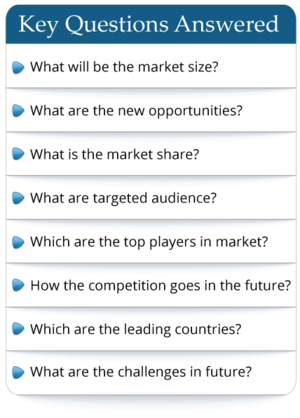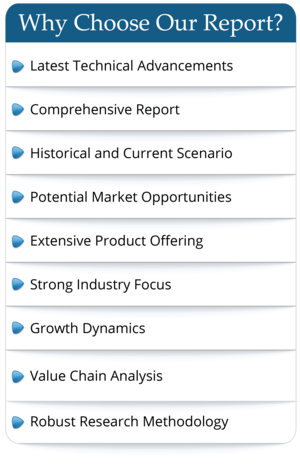Global Automotive Engine Encapsulation Market Professional Survey by Types, Applications, and Players, with Regional Growth Rate Analysis and Development Situation, from 2023 to 2028
SKU ID : Maia-24565771 | Publishing Date : 02-Aug-2023
Automotive engine encapsulation is a process used to provide thermal and acoustic insulation in the form of a cover over the vehicle's engine. It is used to create a thermoplastic shield that helps to reduce engine noise and simultaneously improves the thermal efficiency of the vehicle. Automotive engine encapsulation also improves the vehicle's fuel consumption and CO2 emissions.
The global automotive engine packaging market is growing rapidly due to growing demand for fuel-efficient vehicles and strict regulations to minimise engine noise and carbon dioxide emissions. The Asia Pacific region is estimated to dominate the automotive engine encapsulation market, by volume as well as value. The Asia Pacific region currently accounts for more than 50% of the global automobile production. The region comprises emerging economies such as China and India along with developed nations such as Japan and South Korea. The increase in disposable income in developing countries such as India and China and growing stringency of emission regulations are the key factors driving the market in the Asia Pacific region.
This report elaborates on the market size, market characteristics, and market growth of the Automotive Engine Encapsulation industry between the year 2018 to 2028, and breaks down according to the product type, downstream application, and consumption area of Automotive Engine Encapsulation. The report also introduces players in the industry from the perspective of the value chain and looks into the leading companies.
Key Points this Global Automotive Engine Encapsulation Market Report Include:
Market Size Estimates: Automotive Engine Encapsulation market size estimation in terms of revenue and sales from 2018-2028
Market Dynamic and Trends: Automotive Engine Encapsulation market drivers, restraints, opportunities, and challenges
Macro-economy and Regional Conflict: Influence of global inflation and Russia & Ukraine War on the Automotive Engine Encapsulation market
Segment Market Analysis: Automotive Engine Encapsulation market revenue and sales by type and by application from 2018-2028
Regional Market Analysis: Automotive Engine Encapsulation market situations and prospects in major and top regions and countries
Automotive Engine Encapsulation Market
Competitive Landscape
and Major Players: Analysis of 10-15 leading market players, sales, price, revenue, gross, gross margin, product/service profile and recent development/updates, etc.Automotive Engine Encapsulation Industry Chain: Automotive Engine Encapsulation market raw materials & suppliers, manufacturing process, distributors by region, downstream customers
Automotive Engine Encapsulation Industry News, Policies by regions
Automotive Engine Encapsulation Industry Porters Five Forces Analysis
Key players in the global Automotive Engine Encapsulation market are covered in Chapter 2:
RoEchling
Continental
SA Automotive
Uniproducts (India)
Woco Industrietechnik
Furukawa Electric
Greiner Group
Autoneum
Elringklinger
3M Deutschland
Hennecke
UGN
Polytec Holding
Saint-Gobain Isover
Carcoustics Shared Services
Adler Pelzer
In Chapter 6 and Chapter 9, on the basis of types, the Automotive Engine Encapsulation market from 2018 to 2028 is primarily split into:
Engine-mounted
Body-mounted
In Chapter 7 and Chapter 10, on the basis of applications, the Automotive Engine Encapsulation market from 2018 to 2028 covers:
Original Equipment Market (OEMs)
Aftermarket
Geographically, the detailed analysis of consumption, revenue, market share and growth rate of the following regions from 2018 to 2028 are covered in Chapter 8 and Chapter 11:
United States
Europe
China
Japan
India
Southeast Asia
Latin America
Middle East and Africa
Others
In summary, this report relies on sources from both primary and secondary, combines comprehensive quantitative analysis with detailed qualitative analysis, and pictures the market from a macro overview to micro granular segment aspects. Whatever your role in this industry value chain is, you should benefit from this report with no doubt.
Chapter Outline
This report consists of 12 chapters. Below is a brief guideline to help you quickly grasp the main contents of each chapter:
Chapter 1 first introduces the product overview, market scope, product classification, application, and regional division, and then summarizes the global Automotive Engine Encapsulation market size in terms of revenue, sales volume, and average price.
Chapter 2 analyzes the main companies in the Automotive Engine Encapsulation industry, including their main businesses, products/services, sales, prices, revenue, gross profit margin, and the latest developments/updates.
Chapter 3 is an analysis of the competitive environment of Automotive Engine Encapsulation market participants. This mainly includes the revenue, sales, market share, and average price of the top players, along with the market concentration ratio in 2022 and the players' M&A and expansion in recent years.
Chapter 4 is an analysis of the Automotive Engine Encapsulation industrial chain, including raw material analysis, manufacturing cost structure, distributors, and major downstream buyers.
Chapter 5 focuses on Automotive Engine Encapsulation market dynamics and marketing strategy analysis, which include opportunities, challenges, industry development trends under inflation, industry news and policies analyzed by region, Porter's Five Forces analysis, as well as direct and indirect marketing, and the development trends of marketing channels.
Chapters 6-8 have segmented the Automotive Engine Encapsulation market by type, application, and region, with a focus on sales and value from 2018 to 2023 from both vertical and horizontal perspectives.
Chapters 9-11 provide detailed Automotive Engine Encapsulation market forecast data for 2023-2028, broken down by type and application, region, and major countries to help understand future growth trends.
Chapter 12 concludes with an explanation of the data sources and research methods. Verify and analyze through preliminary research to obtain final quantitative and qualitative data.
Years considered for this report:
Historical Years:
2018-2022Base Year:
2022Estimated Year:
2023Forecast Period:
2023-2028Frequently Asked Questions
- By product type
- By End User/Applications
- By Technology
- By Region

 Pre-order Enquiry
Pre-order Enquiry Request Free Sample
Request Free Sample


 Request Sample
Request Sample Request Customization
Request Customization Check Discounts
Check Discounts











